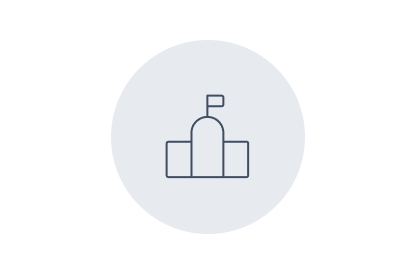 Patent Office
Patent Office
LoadRunner Professional and RPA support ‘Digital First’ agenda to ensure swift processing of thousands of patents applications

Solution group

Outcomes
- Preparing Patent Office infrastructure for potential 300% boost in applications
- Faster application processing through RPA
- 4-fold user increase managed through robust performance testing
Benefits
-
4-fold
user increase managed through robust performance testing
Challenge
Change in legal government statement anticipated 300% application demand increase prioritized Patent Office for system modernization and process streamlining.
Details
Manual processes could not support legal statement change challenges
Intellectual property is something that you create using your mind—for example, a story, an invention, an artistic work, or a symbol. Having the right type of intellectual property protection helps you to stop people stealing or copying the various elements. Every month, the Patent Office receives up to 65,000 patent, trademark, and design applications. One IT Consultant with the Patent Office explains this process: “Applications arrive by email and in PDF format. We manually extracted the relevant information and entered this into the patent systems, after which a team of validators checked the information against set criteria to determine the validity of the application. An email was then sent to patent lawyers and assessment teams. All in all, the process was tedious and time-consuming.”
The Patent Office IT environment was ageing and consisted of 2,000 systems and sub-systems. It was already a candidate for the Government's digitalization agenda: a crucial initiative in serving citizens online to unlock the power of data and increase the public's confidence in using online services. When the change in legal government statement was announced, the Patent Office realized that existing patent, trademark, and design grant holders would need to re-apply under new legislation and the Patent Office would need to reissue all certificates. It estimated a 300 percent application increase to allow for this process.
Working with Digital Assured and seeing the power of the Micro Focus (now OpenText) solutions has helped us streamline our current patent, trademark, and design application process. Applicants receive feedback much faster, and we are pleased to have updated our systems and processes in line with our ‘Digital First' agenda.
Loadrunner Professional and RPA boost productivity and delivery
Daniel Wainwright, Chief Digital Officer of Digital Assured, takes up the story: “We were involved with Patent Office as an unbiased, trusted representative of the broad software user community and were asked to consult on how to tackle this particular challenge. We felt it required both an IT and human resources response, as a lot of the work done through the Patent Office is very qualitative and needs to have human intelligence applied to it. However, the manual process of extracting information from applications and entering them into relevant systems could absolutely be automated and streamlined. As the final legal statement outcome at that point was not clear, we worked through several scenarios to understand the current state and create a baseline. Our previous experience with OpenText LoadRunner Professional led us to believe that we could leverage this to confidently test the complex load, stress, and performance scenarios.”
Working with a team of three Patent Office performance engineers, Digital Assured prepared the IT infrastructure to manage the additional strain. OpenText™ LoadRunner Professional was deployed to understand what a peak in demand would look like and how to model the behavior of different scenarios so that solid recommendations for systems replacements could be made, while the OpenText RPA solution was used to streamline the application process. This robotic worker is designed to boost productivity by performing everyday tasks and liberating human brain power to focus on more important things. “RPA scrapes the relevant information from patent application emails and PDF documents, validates it, inputs it across the various systems, and updates all relevant parties of its progress,” says Wainwright.
Faster application response in streamlined process
With the IT systems tested through LoadRunner Professional, and tuned or replaced where necessary, the team felt confident that it would be up to the task of managing the increase in application demand. The Patent Office hired nearly four times the number of people to support the validation process during the transition period. This of course meant four times the number of users within the infrastructure, but early testing using LoadRunner Professional, meant the system was prepared to handle the increased demand.
The IT Consultant with the Patent Office concludes: “Working with Digital Assured and seeing the power of the Micro Focus (now OpenText) solutions has helped us streamline our current patent, trademark, and design application process. Applicants receive feedback much faster, and we are pleased to have updated our systems and processes in line with our ‘Digital First' agenda.”
RPA scrapes the relevant information from patent application emails and PDF documents, validates it, inputs it across the various systems, and updates all relevant parties of its progress.
About Patent Office

The Patent Office IT environment was ageing and consisted of 2,000 systems and sub-systems. It was already a candidate for the Government's digitalization agenda: a crucial initiative in serving citizens online to unlock the power of data and increase the public's confidence in using online services. When the change in legal government statement was announced, the Patent Office realized that existing patent, trademark, and design grant holders would need to re-apply under new legislation and the Patent Office would need to reissue all certificates. It estimated a 300 percent application increase to allow for this process.